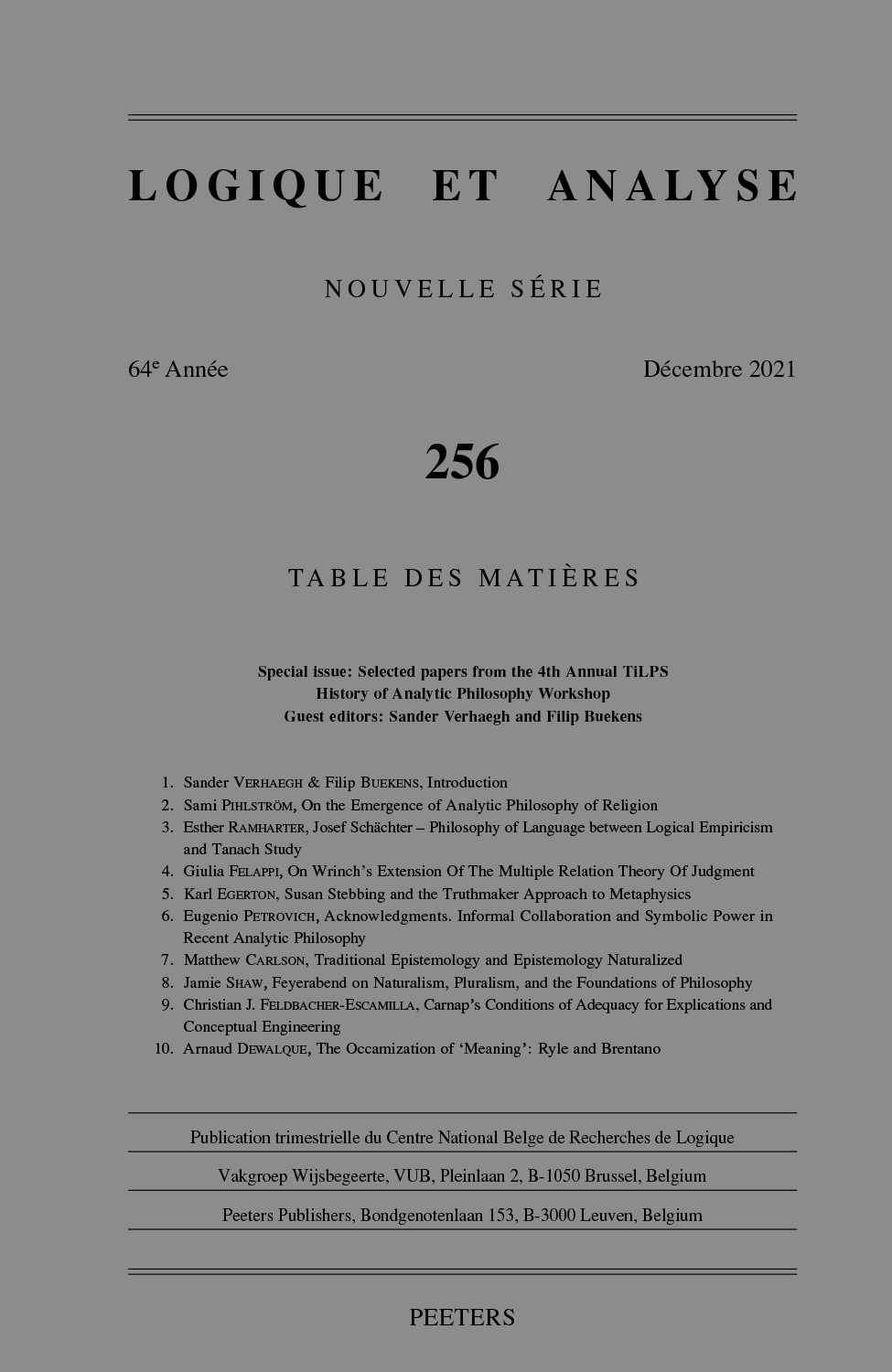next article in this issue  |

Preview first page |
Document Details : Title: The Square of Opposition in Catholic Hands Subtitle: A Chapter in the History of 20th-Century Logic Author(s): JASPERS, Dany , SEUREN, Pieter A.M. Journal: Logique et Analyse Volume: 233 Date: 2016 Pages: 1-35 DOI: 10.2143/LEA.233.0.3149529 Abstract : The present study describes how three now almost forgotten mid-20th-century logicians, the American Paul Jacoby and the Frenchmen Augustin Sesmat and Robert Blanché, all three ardent Catholics, tried to restore traditional predicate logic to a position of respectability by expanding the classic Square of Opposition to a hexagon of logical relations, showing the logical and cognitive advantages of such an expansion. The nature of these advantages is discussed in the context of modern research regarding the relations between logic, language, and cognition. It is desirable to call attention to these attempts, as they are, though almost totally forgotten, highly relevant against the backdrop of the clash between modern and traditional logic. It is argued that this clash was and is unnecessary, as both forms of predicate logic are legitimate, each in its own right. The attempts by Jacoby, Sesmat, and Blanché are, moreover, of interest to the history of logic in a cultural context in that, in their own idiosyncratic ways, they fit into the general pattern of the Catholic cultural revival that took place roughly between the years 1840 and 1960. The Catholic Church had put up stiff resistance to modern mathematical logic, considering it dehumanizing and a threat to Catholic doctrine. Both the wider cultural context and the specific implications for logic are described and analyzed, in conjunction with the more general philosophical and doctrinal issues involved. |
 |


